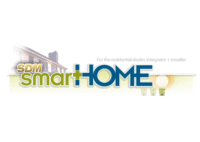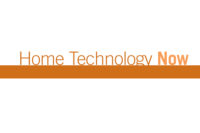Addressing the Challenges of Ultra HD/4K
Ultra HD/4K resolutions are going to be a major factor in pushing screen sizes to larger and larger dimensions.

We’ve talked about Ultra HD/4K a few times over the last year; suffice to say this new technology has earned its spot as one of the hottest trends in the industry. And it is no wonder why people are hyped about this technology, Ultra HD/4K resolutions are going to be a major factor in pushing screen sizes to larger and larger dimensions. Ultra HD/4K is the next generation of high-definition television, sporting a minimum resolution of 3,840 x 2,160 pixels. This four-fold increase in picture resolution is just the start of many benefits to a much better picture quality.
When Ultra HD/4K first arrived on the tech scene two initial concerns were offered, the first being available content. Sure, the 4K resolution sounds great but if the content is not 4K than what’s the point? And though that was a great point, over the last several months we’ve seen announcements from several content providers promising 4K streaming content. So in all reality the 4K content train is picking up momentum.
The second point of skepticism was these technologies carry a hefty price tag. But as we’ve often seen, the price tag can often attract a certain client and the last thing you want is to lose out on a bid because you’re not prepared to work with the new technology on the block.
To be successful in real world applications, 4K distribution systems must be designed and engineered to address the following five challenges:
- Mismatched resolutions
- New frame rate considerations
- Signal integrity issues
- New cable length restrictions
- Source/display compatibility
Our guess is that you’re not quite ready to tackle these challenges, and that’s ok. Why? Because the technology is so new, most technicians look at this list and feel unprepared. The good news is, CEDIA in partnership with Crestron, has developed a new (and free) course: Design Considerations for Ultra HD - 4K Technology.
This course is specifically designed to address the many technical challenges required to transmit and display Ultra HD/4K content, as it is very bandwidth intensive. The purpose of this course is to inform home technology professionals about the differences in Ultra HD/4K technology as compared to its 1080P predecessors and what it takes to successfully distribute such signals.
Participants will gain an understanding of Ultra HD/4K; improvements with the image resolution, the math in calculating the higher rate video signals, and the transport mechanisms through high-definition multimedia interface (HDMI). At the conclusion of this course, participants should be able to: define what Ultra HD/4 k technology is; describe existing problems with image resolution through the use of various technologies; calculate pixel clock, data rate, and line rate in determining video signals for Ultra HD/4k, and evaluate the transport capabilities of HDMI with Ultra HD/4k technologies.
This technology is something you need to learn how to work with, and home technology professionals have the option of taking an eLearning version of the course or an instructor-led version of the course. Both options are offered to CEDIA members and non-members at no cost. To learn more about the course visit cedia.net/training.
Once you’ve learned about all the intricacies of Ultra HD/4K come see the technology in person at CEDIA EXPO 2014. This year’s show will be held at the Colorado Convention Center, Denver, September 10-13 and promises a 360-degree integrated experience for home technology professionals. Visit cedia.net/expo to learn more.
Looking for a reprint of this article?
From high-res PDFs to custom plaques, order your copy today!








